February 2022 Plant Profile: Fine Foliage of Large-Leaf Rhododendrons

The species of Rhododendron in the subsection Grandia are all native to southeast Asia, though they blend into our PNW conifer and mixed forests magically. Now is an excellent time to come visit these amazing plants in the Washington Park Arboretum before the distraction of so much color enters the world.
Read moreLunar New Year and the Legend of the Mai Flower
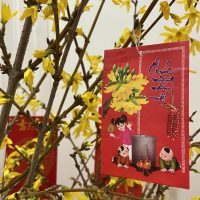
Each country has its own traditions associated with the new year. For Vietnamese families, we love to decorate our homes with the yellow Mai flower (Ochna integerrima). As if on cue, the buds push forth an explosion of delicate golden flowers during the days leading up to Lunar New Years, called Tết in Vietnamese. Read more about the legend surrounding the beautiful Mai flower.
Read moreChampion Trees of the Washington Park Arboretum
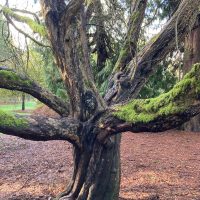
A champion tree is the largest tree of a species. These trees are measured using the American Forests points (AF points) which is calculated based on the trunk circumference, the height, and the average crown spread to give a point value. The Arboretum has many champion trees which were identified by Robert Van Pelt in his 2003 book, “Champion Trees of Washington State”.
Read moreWinners of the 2021 Snow Trials!
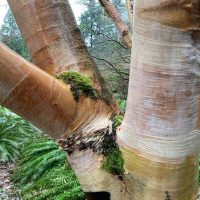
1) Betula albosinensis var. septentrionalis Chinese Red Birch
These beautiful birches show off the delicate pink, cream, and copper colors of their peeling bark in the Witt Winter Garden.
The delicate twigs of the birch shed snow, while the trunk bark glows in comparison to the white.
“Septentrionalis” generally means “northern” and refers to the seven oxen which make up the Ursa Major constellation in the northern sky.
Babbling Brook of Rhododendron Glen
IMG_0073
Enjoy this 50 sec video capturing rare footage of Rhododendron Glen’s creek in full grandeur after recent snow melt and heavy rains. Filmed by Ron Schmaltz, UWBG horticulturist assigned to Rhododendron Glen restoration project.
Queer Botany: The Sapphic Violet

Plants enrich our lives in many ways and each one tells a story. The red rose is known to be the symbol of romance. The 4-leaf clover for good luck.
For the violet, its story and importance to the queer community can be traced back to Ancient Greece and the poetess, Sappho (c. 600 BCE).
Read moreUW Farm x 2050 Project Video Series
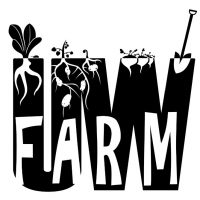
The UW Farm is teaming up with 2050 Project, a nonprofit organization that specializes in environmental communication to bring you a 6-part video series about sustainable food systems and urban farming!
Read moreUW Farm Weekly Dirt: Wrapping Up the Season
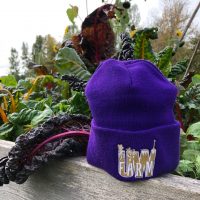
Like most farms around this time, the UW Farm is officially wrapping up the growing season! We are entering a time of Rest, Reflect, and Refresh.
Read moreA Berry Colorful Winter Beginning
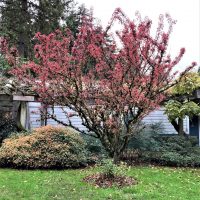
1) Malus ‘Adirondack’ Adirondack Crabapple
A small deciduous, sun-loving tree with multi-seasonal interest.
Mass amounts of dark pink buds open to form large fragrant white blossoms in late spring as new foliage emerges.
After flowering, it becomes heavily laden with seemingly glowing, pink, cherry-like fruit which last well into winter.
Rightfully so, this stunning little tree has received the “Award of Garden Merit” from the Royal Horticultural Society.
The Weekly Dirt 12.16.21
12.16.21
Around The Farm
by Dannette Lombert, UW Farm AmeriCorps Member
Wrapping Up the Season
Like most farms around this time, the UW Farm is officially wrapping up the growing season! We are entering a time of Rest, Reflect, and Refresh, meaning that:
Most of our beds are cover cropped – inputting nutrients back into the soil, improving water percolation, feeding micro-organisms, and reducing soil erosion
We are looking back to see what has worked for the farm and what we can improve on, programmatically and production-wise
We will be completing the crop plan and ordering all our seeds for next year
We have no volunteer shifts until January 17th (MLK Day), and then continue regular volunteer shifts in February
The Weekly Dirt becomes the Monthly Dirt
We want to use this portion of the newsletter to thank all of our supporters, CSA members, volunteers, interns, staff members, and anyone who has come in contact with the farm in their own way!
Read more